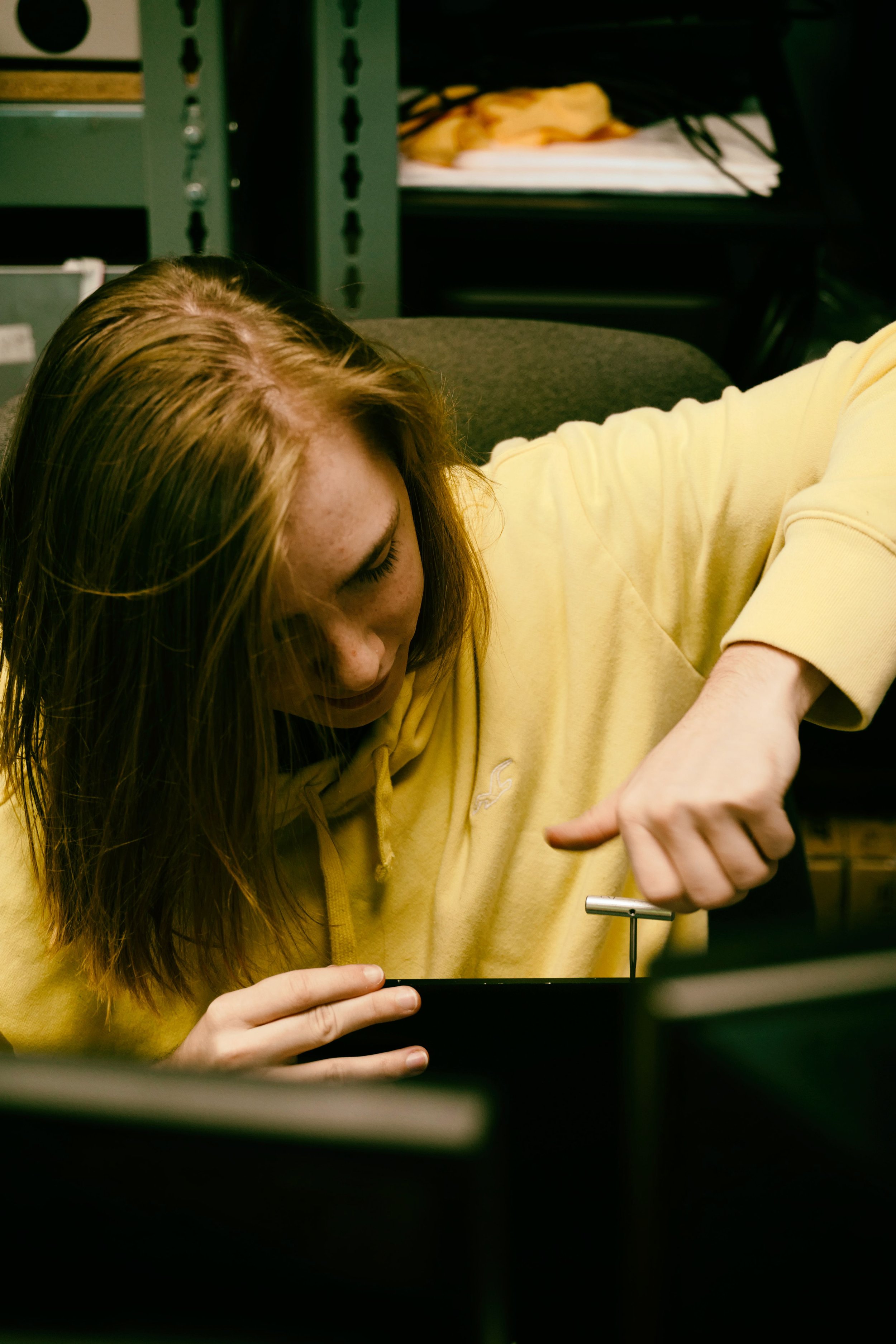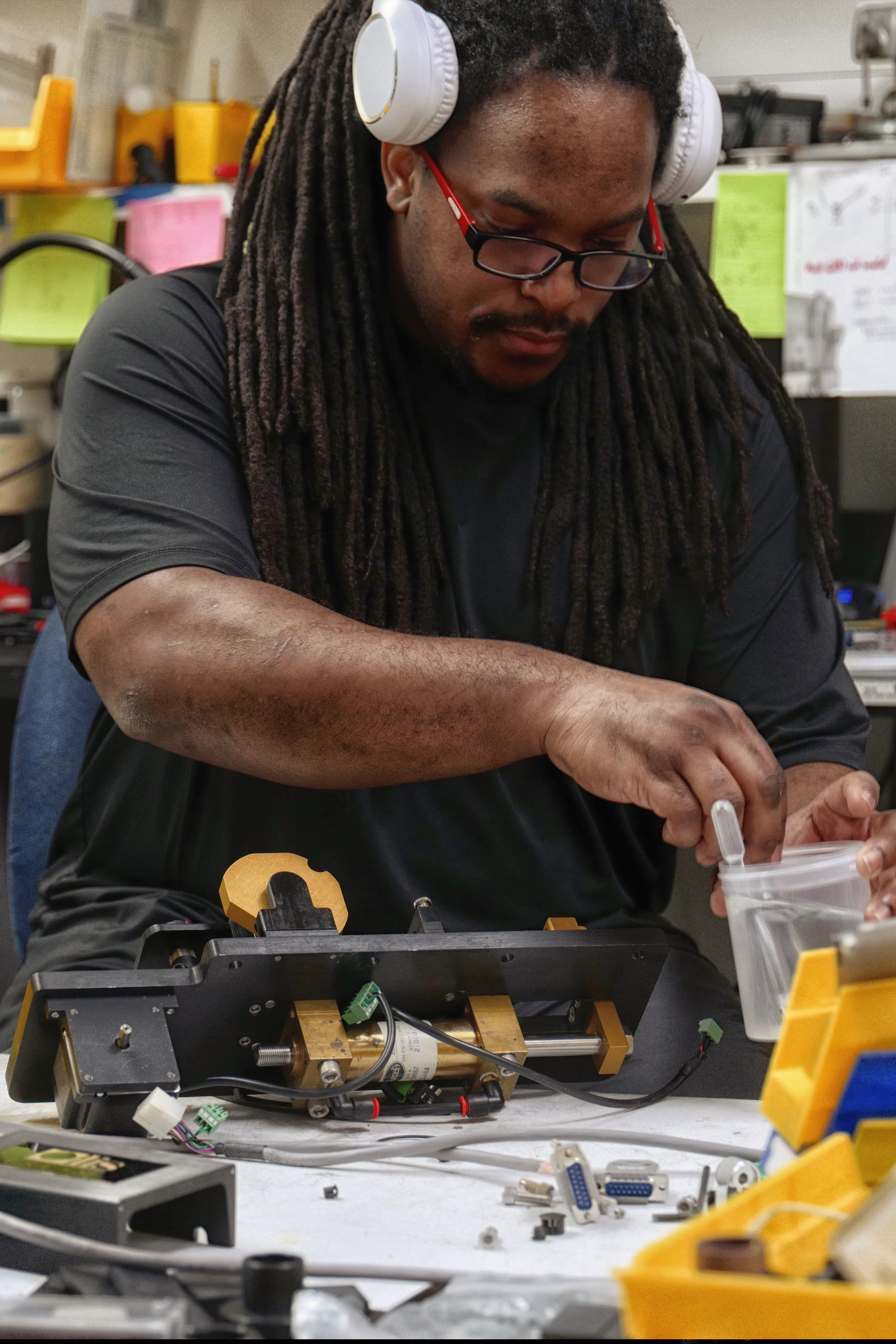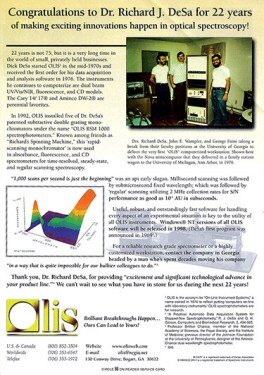Spectrophotometers Can Be Fun For Everyone
Wiki Article
Spectrophotometers Things To Know Before You Buy
Table of ContentsCircular Dichroism Things To Know Before You Get ThisThe smart Trick of Circular Dichroism That Nobody is DiscussingThe 25-Second Trick For SpectrophotometersThe Main Principles Of Circularly Polarized Luminescence Top Guidelines Of Circular DichroismLittle Known Facts About Circular Dichroism.Spectrophotometers for Dummies5 Simple Techniques For Uv/vis/nirSpectrophotometers - An OverviewThe Buzz on Circular DichroismNot known Factual Statements About Uv/vis The Greatest Guide To Uv/vis/nirUnknown Facts About Uv/vis
It is then scanned through the sample and the referral services. Fractions of the occurrence wavelengths are sent through, or shown from, the sample and the recommendation. The resultant light strikes the photodetector gadget, which compares the relative strength of the two beams. Electronic circuits convert the relative currents into linear transmission percentages and/or absorbance/concentration worths.The transmission of a referral compound is set as a baseline (information) value, so the transmission of all other compounds are recorded relative to the preliminary "zeroed" substance. The spectrophotometer then transforms the transmission ratio into 'absorbency', the concentration of particular elements of the test sample relative to the initial compound.
Since samples in these applications are not easily available in big quantities, they are especially fit to being examined in this non-destructive strategy. In addition, valuable sample can be saved by utilizing a micro-volume platform where as low as 1u, L of sample is required for total analyses. A brief description of the procedure of spectrophotometry includes comparing the absorbency of a blank sample that does not consist of a colored compound to a sample which contains a colored substance.
All About Circularly Polarized Luminescence
In biochemical experiments, a chemical and/or physical residential or commercial property is chosen and the treatment that is used is particular to that residential or commercial property in order to obtain more info about the sample, such as the amount, purity, enzyme activity, and so on. Spectrophotometry can be utilized for a number of techniques such as figuring out optimum wavelength absorbance of samples, identifying optimum p, H for absorbance of samples, determining concentrations of unknown samples, and determining the p, Ka of different samples.: 21119 Spectrophotometry is also a practical procedure for protein purification and can likewise be used as an approach to produce optical assays of a substance.It is possible to know the concentrations of a two component mix using the absorption spectra of the standard options of each part. To do this, it is required to know the extinction coefficient of this mix at two wave lengths and the termination coefficients of options which contain the known weights of the 2 parts.

Circular Dichroism for Beginners
Area. The concentration of a protein can be approximated by measuring the OD at 280 nm due to the presence of tryptophan, tyrosine and phenylalanine.This approach requires a spectrophotometer capable of determining in the UV area with quartz cuvettes.: 135 Ultraviolet-visible (UV-vis) spectroscopy involves energy levels that thrill electronic transitions. Absorption of UV-vis light thrills molecules that are in ground-states to their excited-states.
These curves can be used to check a new batch of colorant to inspect if it makes a match to specs, e
Traditional visible conventional spectrophotometers can not detect if a colorant or the base material has fluorescence. This can make it tough to handle color problems if for example one or more of the printing inks is fluorescent. There are two major setups for visual spectrum spectrophotometers, d/8 (spherical) and 0/45.
Researchers use this instrument to measure the amount of substances in a sample. If the substance is more concentrated more light will be taken in by the sample; within little varieties, the Beer, Lambert law holds and the absorbance in between samples vary with concentration linearly. In the case of printing measurements two alternative settings are typically utilized- without/with uv filter to manage much better the effect of uv brighteners within the paper stock.
Unknown Facts About Uv/vis
Some applications require little volume measurements which can be performed with micro-volume platforms. As explained in the applications area, spectrophotometry can be utilized in both qualitative and quantitative analysis of DNA, RNA, and proteins. Qualitative analysis can be utilized and spectrophotometers are utilized to record spectra of compounds by scanning broad wavelength regions to figure out the absorbance properties (the intensity of the color) of the compound at each wavelength.
The 15-Second Trick For Circular Dichroism
One significant element is the type of photosensors that are readily available for different spectral regions, however infrared measurement is likewise difficult since practically everything emits IR as thermal radiation, especially at wavelengths beyond about 5 m. Another problem is that numerous products such as glass and plastic soak up infrared, making it incompatible as an optical medium.2013. p. 13. Allen, DW; Cooksey, C; Tsai, BK (Nov 13, 2009). "Spectrophotometry". Recovered Dec 23, 2018. Ninfa AJ, Ballou DP, Benore M (2010 ). Essential Lab Methods for Biochemistry and Biotechnology (second ed.). Hoboken: Wiley & Sons. ISBN 9780470087664. OCLC 488246403. Schwedt G (1997 ). The vital guide to analytical chemistry.
Oke, J. B.; Gunn, J. E.
5 Simple Techniques For Spectrophotometers

Ninfa AJ, Ballou DP, Benore M (2015 ). Fundamental Laboratory Techniques for Biochemistry and Biotechnology (3, rev. ed.). circular dichroism. Laboratory Devices.
7 Easy Facts About Spectrophotometers Shown
"Applied Spectrophotometry: Analysis of a Biochemical Mixture". Biochemistry and Molecular Biology Education. Journal of Biochemistry Education.Circular Dichroism Fundamentals Explained
U.S. Department of Commerce National Bureau of Standards unique publication; 378. Washington, D.C.: U.S. National Bureau of Standards.The procedure starts with a regulated source of light that brightens the examined sample. When it comes to reflection, as this light interacts with the sample, some is soaked up or produced. The produced light travels to the detector, which is evaluated, quantified, and provided as industry-standard color scales and indices.
Industry governing bodies generally specify particular metrics for particular products, such as Tomato and Coffee indices. The simplified mathematics appears like this: Where R is the reflection coefficient. All terms are assessed over the visible spectrum from 400 to 700 nm. In the case of transmission, when the light interacts with the sample, it is either soaked up, shown, or transferred.
The 10-Minute Rule for Uv/vis/nir
Examples consist of APHA (American Public Health Association) for watercolor and purity analysis, ASTM D1500 for petrochemical color analysis, edible oil indices used in food, and color analyses of drinks. The streamlined math looks like this:. Where T is the transmission coefficient. All terms are examined over the noticeable spectrum from 400 to 700 nm.Image Credit: Matej Kastelic/ Dr. Arnold J. Beckman and his associates at the National Technologies Laboratories first developed the spectrophotometer in 1940. In 1935 Beckman founded the business, and the discovery of the spectrophotometer was their most ground-breaking development.
Get This Report about Circular Dichroism
99% accuracy. Gradually, scientists kept improving the spectrophotometer style to improve its performance. For example, the UV capabilities of the model B spectrophotometer were enhanced by replacing the glass prism with a quartz prism. Eventually, the Design DU was produced, containing a hydrogen light and other improvements. This instrument was used in industrial labs, clinics, and chemistry and biochemistry departments.After 1984, double-beam variations of the device were created. The addition of external software with the arrangement of onscreen screens of he has a good point the spectra came in the 1990s. Usually, a spectrophotometer is comprised of two instruments, particularly, a spectrometer and a photometer. A fundamental spectrophotometer contains a source of light, a monochromator, a collimator for straight light beam transmission, a cuvette to position a sample, and a photoelectric detector.
Getting The Circularly Polarized Luminescence To Work
There are various kinds of spectrophotometers in various sizes and shapes, each with its own purpose or functionality. A spectrophotometer figures out how much light is reflected by chemical components. UV/Vis. It determines the difference in light intensity based upon the overall amount of light introduced to a sample and the quantity of beam that passes through the sample service
A spectrophotometer is utilized to determine the concentration of both colorless and colored solutes in a solution. This instrument is used to figure out the rate of a reaction.
Report this wiki page